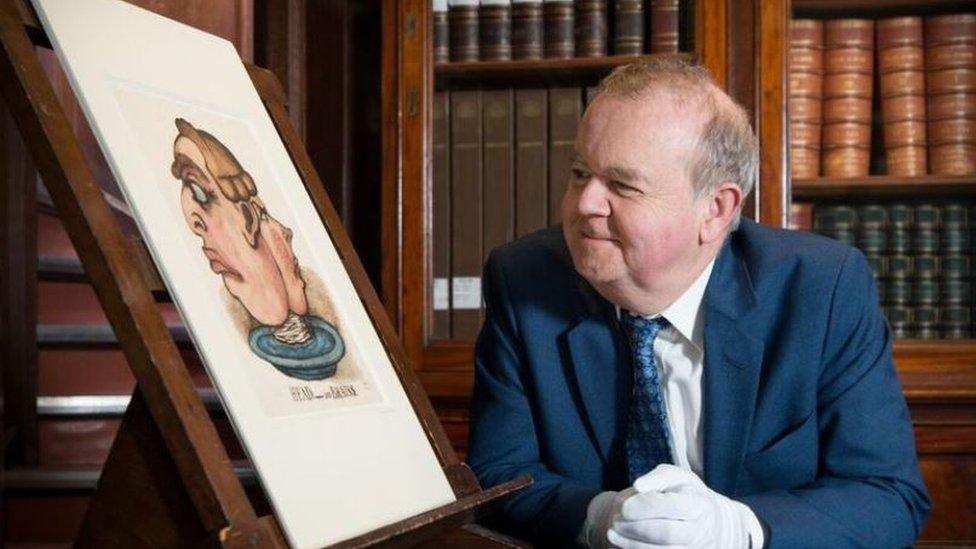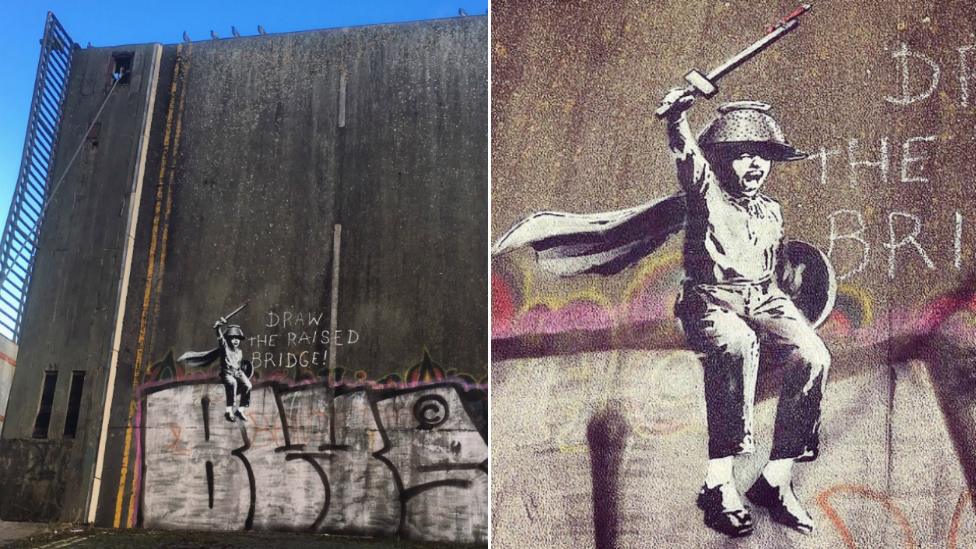Banksy hoax caveman art to go back on display at British Museum
- Published

Peckham Rock came with a highly authentic-looking information label
A fake cave painting by Banksy is going back on display in the British Museum, 13 years after it was first placed there as a hoax.
Peckham Rock, essentially a lump of concrete showing a supposed prehistoric figure pushing a shopping trolley, was smuggled into the venue in 2005.
It stayed for three days before staff realised it didn't belong there.
Banksy has now loaned the work back to the museum for an exhibition curated by Ian Hislop.
The Private Eye editor and Have I Got News for You panellist has chosen more than 100 objects for a show opening in September titled I Object: Ian Hislop's Search for Dissent.
When Peckham Rock was first placed in the museum in 2005, it was accompanied by an authentic-looking information label.
"The work is not very big and we think he [Banksy] just came into the museum like any other visitor and installed it himself - but we just can't be sure," a spokesman said.
"The information label was also just like the ones we use at the museum to prevent suspicion."
The work was only discovered after a museum staff member saw on Banksy's website , externalthat he was challenging people to find the hoax work.

Ian Hislop admires a mock portrait of himself that's in the show
Since being returned to Banksy, the rock has featured in his exhibitions in London and Bristol and is on loan directly from the artist for Hislop's exhibition.
Hislop's exhibition aims to illustrate stories of satire, subversion and dissent.
"At first sight the British Museum, external seems to be a reinforcement, if not a celebration, of authority," he said.
"But... there are extraordinary objects that bear witness to someone questioning the authorised version of their times and deciding to make a small though often lasting protest."
Items on show will include an Edwardian coin defaced with the slogan Votes for Women, 18th Century prints mocking George IV as a drunk, and a salt cellar with hidden Catholic imagery made during the English Reformation.

Follow us on Facebook, external, on Twitter @BBCNewsEnts, external, or on Instagram at bbcnewsents, external. If you have a story suggestion email entertainment.news@bbc.co.uk, external.
- Published16 March 2018

- Published26 January 2018

- Published18 September 2017
